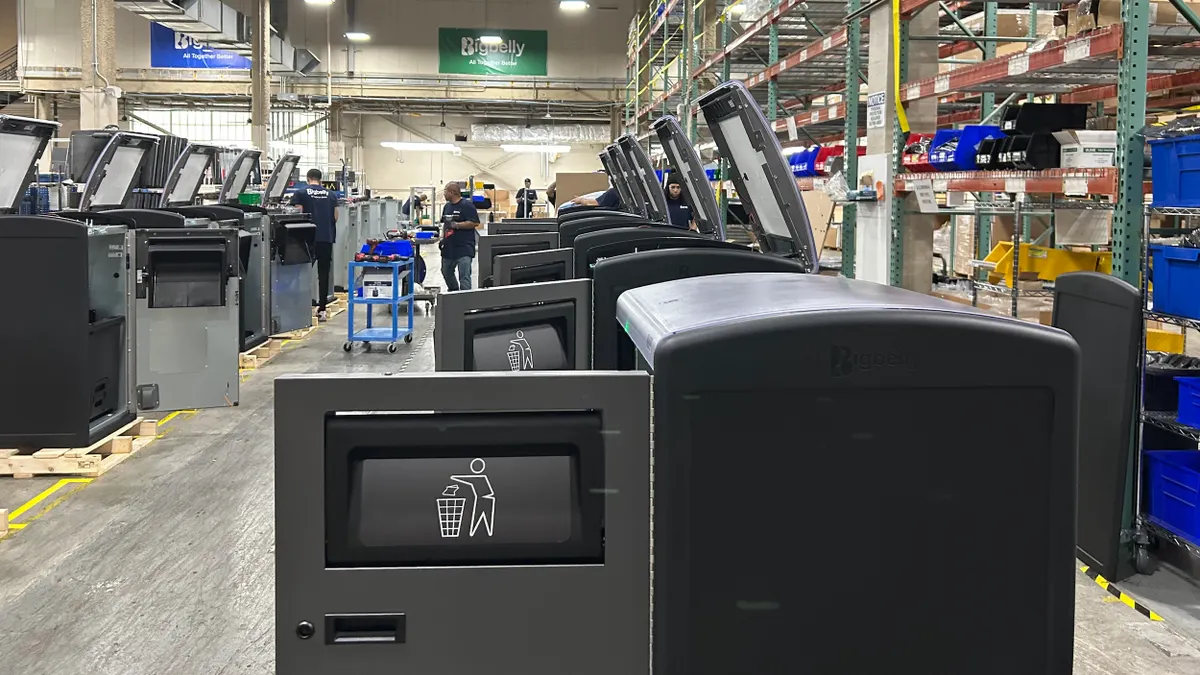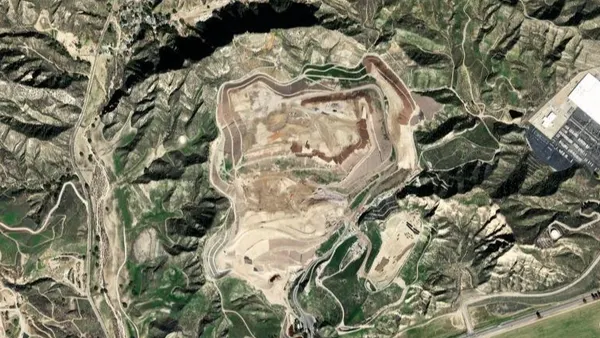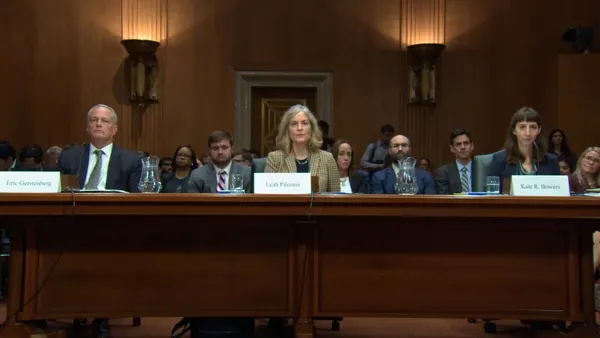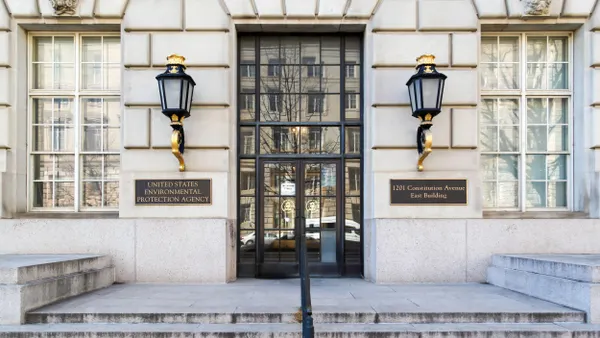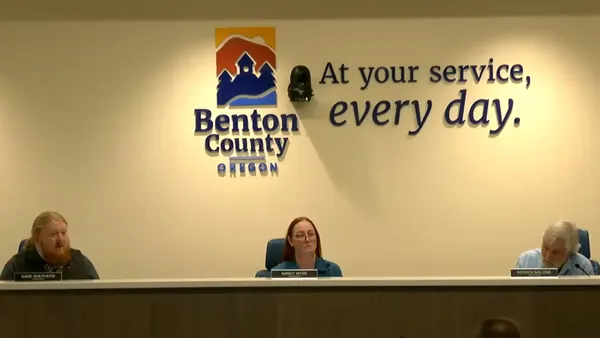Dive Brief:
- Environmental services company Veolia North America says its recent incineration testing on three kinds of PFAS-laden materials shows the technology can destroy more than 99% of specific per- and polyfluoroalkyl substances.
- Results showed that incineration at high temperature — up to 2,040 degrees Fahrenheit — can eliminate “high concentrations” of certain PFAS, including up to 99.9999% of PFOS and PFHxS, Veolia said in a news release.
- Veolia, which also offers water treatment services, expects demand for PFAS-related research and resulting management services to continue, even after the EPA last week said it would roll back significant parts of the National Primary Drinking Water Regulation, said Bob Cappadona, president and CEO of Veolia North America’s Environmental Solutions and Services business.
Dive Insight:
Stricter state and federal PFAS regulations originally spurred environmental services companies like Veolia to focus on PFAS management as a growing business opportunity, but Veolia’s incineration test results come amid a shifting regulatory landscape for PFAS management and regulation.
The EPA also recently announced it would make more frequent updates to its guidance on PFAS destruction and disposal methods, which aims to list the most up-to-date science on each kind of technology. The update process, currently scheduled for every three years, will now take place annually.
The EPA has said more research is needed to determine which technologies and methods will be most effective in destroying or managing PFAS, and EPA Administrator Lee Zeldin has said the agency will continue to support further PFAS-related research.
Veolia sees its latest incineration test as a way to contribute to the ongoing research around PFAS destruction technologies while also showing its PFAS destruction offerings are a reliable part of its suite of services. The test is the most comprehensive in the industry so far, Cappadona said.
“There are so many questions out there about PFAS management and treatment, and we wanted to make sure we could demonstrate what we already knew on paper and what this facility could actually do in all scenarios, from low concentration to high concentration,” he said.
Veolia has invested heavily in PFAS management offerings in the past year. Last fall, it launched BeyondPFAS, a set of treatment and compliance services for businesses and municipalities looking for “comprehensive” PFAS management assistance.
In addition to managing PFAS in drinking water, it also offers site assessment services along with deep well injection and landfilling services for certain PFAS-containing materials. To manage what Cappadona expects will be a growing pipeline of PFAS-containing materials and other types of waste, Veolia is building a new incinerator at its existing site in Gum Springs, Arkansas, expected to be completed by the end of the year and open in 2026.
Veolia also provides water treatment services and estimates it provides drinking water to more than 9 million people in the United States. It has been following the recent EPA announcement that the agency would roll back certain drinking water regulations that set legally enforceable limits on six PFAS in drinking water.
That standard had become the default standard for treating a range of wastewater categories, and it is also relevant to waste facility operators because rules might affect leachate management, groundwater monitoring efforts and relationships with wastewater treatment facilities.
The EPA plans to rescind and “reconsider” regulations for four types of PFAS, including the PFHxS chemical Veolia tested for in its incineration test. EPA plans to keep regulations for two other chemicals in the standard: PFOA and PFOS.
The EPA will also extend compliance deadlines for PFOA and PFOS, saying it would give drinking water system operators more time to develop plans for complying with maximum contaminant levels for the two chemicals.
“Other than changing the time frames for compliance, it doesn’t really change much” for Veolia’s PFAS management business, Cappadona said. “We support working with our customers in order to assist them in meeting those standards.”
In the meantime, Cappadona said Veolia’s data shows it can meet strict standards regardless of the status of the EPA’s drinking water regulations.
A third party group tested the ability of Veolia’s incinerator to treat PFAS in aqueous film forming foam, a kind of PFAS-containing firefighting foam, as well as PFAS-contaminated soil and spent carbon water treatment media. The test took place at Veolia’s incinerator in Port Arthur, Texas.
Its incineration testing was completed in July and October 2024, before the drinking water standards were rolled back. Researchers found that PFAS levels in liquid residue were below those MCLS set in the drinking water standard, according to Veolia.
The test also measured PFAS in air emissions and in residue such as ash, slag and filter cake. Veolia said it used both the EPA’s OTM-45 and OTM-50 methods to confirm a greater than 99% destruction and removal efficiency for air emissions.
It measured “no detectable quantities” of PFAS in solid residues for 41 of its 45 samples taken during the research period. In four ash samples, the study identified target PFAS levels “close to the method detection limit.”
Other environmental services companies are conducting their own PFAS-related incinerator tests in an effort to show the methods are safe and effective. Clean Harbors worked with the U.S. EPA and Department of Defense on a test in November that the company expects will show its high-temperature incinerator can meet a more stringent U.S. EPA testing standard for PFAS destruction. Results are expected sometime in the second quarter, but the company is “very confident” that the incinerator can meet such a standard, said co-CEO Eric Gerstenberger during a February earnings call.
Clean Harbors is also investing heavily in PFAS management services, saying it expects to grow that segment’s pipeline by 20% each quarter this year.







